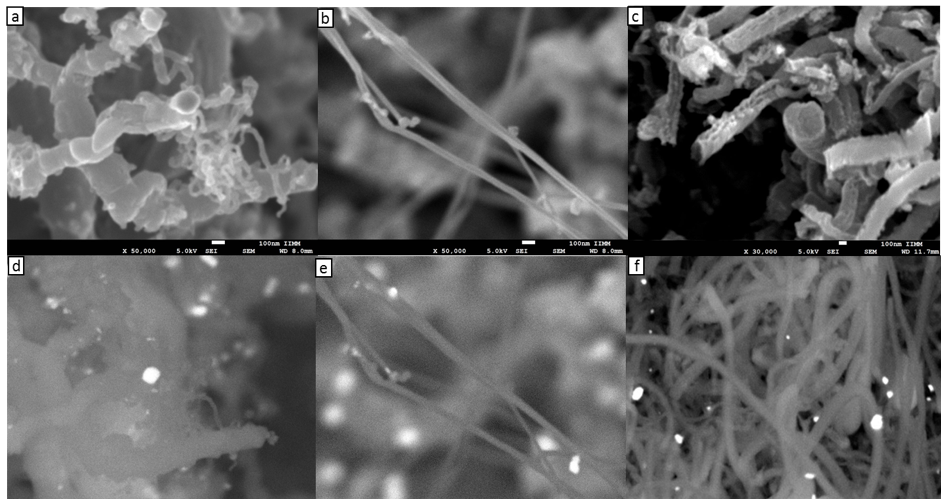Revista Mexicana de Ingeniería Química, Vol. 18, No. 2 (2019), Mat213
Carbon nanostructures synthesis from isopropanol and ethyl acetate applying green chemistry principles
|
D.L. García-Ruiz, F.G. Granados-Martínez, C.J. Gutiérrez-García, J.M. Ambriz-Torres, J.J. Contreras-Navarrete, N. Flores-Ramírez, L. García-González, L. Zamora-Peredo, M.L. Mondragón-Sánchez, L. Domratcheva-Lvova
https://doi.org/10.24275/rmiq/Mat213
Abstract
 |
|
Multiwall carbon nanotubes were grown on a stainless steel AISI 304 core catalyst by chemical vapor deposition in a quartz reactor. The highlight of this research is the use of stainless steel catalyst and organic precursors from renewable feedback for high efficient carbon nanostructures synthesis using green chemistry principles. Isopropanol and ethyl acetate were performing as precursors in the chemical vapor deposition. Raman spectroscopy and electron microscopy were used to analyze the morphology and crystallinity of the synthesized nanostructures. Transmission electron microscopy performed on samples confirms the presence of multiwall carbon nanotubes and metallic particles found on the tip, base and inside the nanotubes demonstrating a mixed growth mechanism. The secondary products found in the samples were carbon nanobars with different interplanar spaces. XRD confirmed the characteristic planes for hexagonal graphite and weak iron and manganese oxides signals. EDS showed a carbon content above 94% and low metals and oxygen contribution. The carbon nanostructures crystallite sizes were calculated from XRD data and compared with the transmission electron microscopy micrographs; the structures obtained from ethyl acetate had major crystallinity. An easy to scale up carbon nanostructures synthesis method applying green chemistry principles is proposed.
Keywords: ethyl acetate, isopropanol, carbon nanostructures, nanoparticles, green chemistry.
|
|
 |

